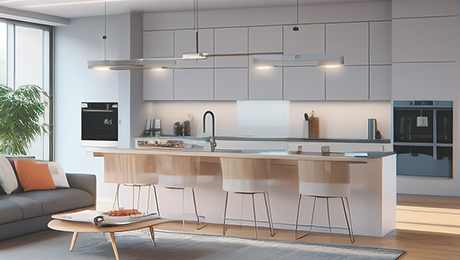The most important parameters of the LCD screen module include:
Resolution is a very important performance indicator. It refers to the number of points that can be displayed in the horizontal and vertical directions on the screen (lines and surfaces on the screen are composed of points). The higher the resolution, the more information can be accommodated on the same screen. For a CRT that can support a resolution of 1280x1024, whether it is 320x240 or 1280x1024 resolution, it can be displayed quite perfectly (because the electron beam can make elastic adjustments). However, the maximum resolution is not necessarily the most suitable resolution, because if the resolution of a 17-inch monitor is set to 1280x1024, the fonts of WINDOWS will be very small, and over time, the eyes will easily get tired. Therefore, the optimal resolution for a 17-inch monitor should be 1024x768.

The contrast ratio is related to the control IC, filter, and directional film selected when manufacturing the LCD panel. For general users, a contrast ratio of 350:1 is sufficient. However, in professional fields, such a contrast ratio is not enough to meet users' needs. Compared to the CRT monitors that can easily achieve a contrast ratio of 500:1 or even higher, only high-end LCD monitors can reach that level. Since contrast ratio is difficult to measure accurately with instruments, it is still necessary to see it in person when choosing.
Liquid crystal is a substance between solid and liquid, and it cannot emit light by itself. It needs an additional light source to work. Therefore, the number of lamp tubes affects the brightness of the LCD monitor. The earliest LCD monitors had only two lamp tubes at the top and bottom, but now, even in the general category, four lamps are the minimum, with six lamps being high-end. There are three types of four-lamp designs: one with a lamp tube on each of the four sides, though it tends to have shadows in the middle. This can be solved by placing four tubes in a parallel arrangement from top to bottom, or using a 'U' shaped arrangement, which effectively turns two tubes into four. The six-lamp tube design actually uses three tubes bent into a 'U' shape and placed parallel to achieve the effect of six lamp tubes.

The viewing angle of an LCD is a headache-inducing issue. After the backlight passes through the polarizer, the liquid crystal, and the alignment layer, the output light has directionality. This means most of the light is emitted vertically from the screen, so viewing the LCD from a larger angle does not show the original colors, and you might only see completely white or black. To solve this problem, manufacturers have started to develop wide-angle technology. So far, there are three popular technologies: TN+FILM, IPS (In-Plane Switching), and MVA (Multi-Domain Vertical Alignment).
Response time refers to the reaction speed of the LCD monitor to input signals, which is the time it takes for the liquid crystal to turn from dark to light or from light to dark, usually measured in milliseconds (ms). To explain this, we need to discuss the perception of dynamic images by human eyes. The human eye has a phenomenon called "persistence of vision," where a high-speed moving image leaves a short impression on the brain. Animations, movies, and the latest games use the principle of persistence of vision, displaying a series of gradually changing images quickly and continuously in front of the eyes to form dynamic images. The acceptable display speed for humans is generally 24 frames per second; this is the origin of the 24 FPS movie playing speed. If the display speed is lower than this standard, people can clearly feel the pause and discomfort in the images. According to this standard, each frame should be displayed in less than 40 ms. Therefore, for an LCD monitor, a response time of 40 ms became a threshold. Displays with a response time lower than 40 ms would show noticeable "ghosting" or "afterimages," creating a blurry sensation. To achieve smooth image display, a speed of 60 frames per second is needed.